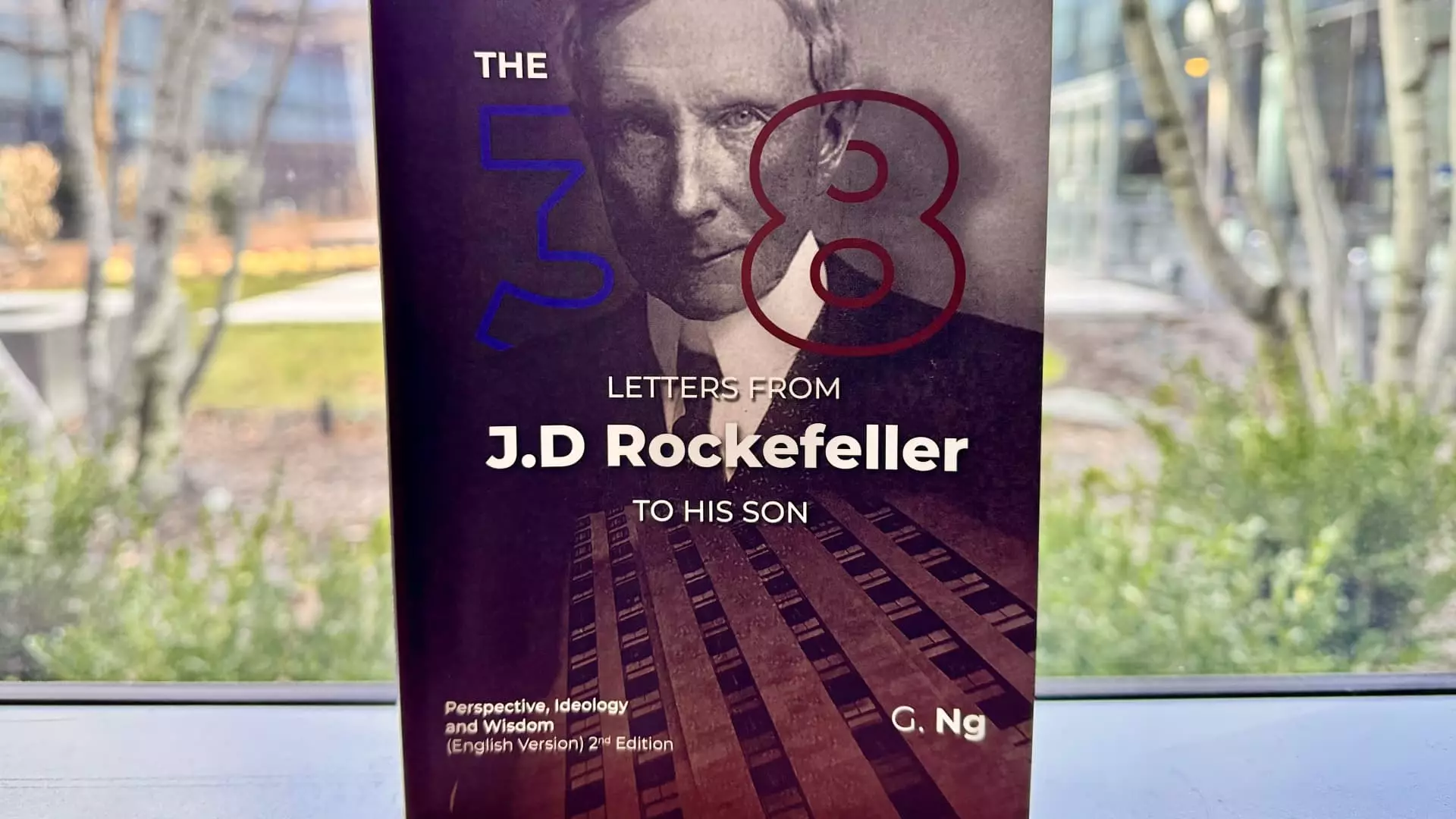The fascination with historic figures like John D. Rockefeller, who was once America’s wealthiest individual, often breeds intrigue and speculation. His legacy, loaded with both generous philanthropy and cutthroat capitalism, makes him a subject of admiration and criticism alike. Recently, this enthusiasm has found a new outlet in the form of a book titled “The 38 Letters from J.D. Rockefeller to His Son: Perspective, Ideology and Wisdom.” However, this book has ignited controversy, sparking questions about its authenticity and the mechanisms behind its publication.
The book in question has captivated a wide audience, securing a spot among Amazon’s best-selling economic history titles. Yet behind its success lies a swirl of uncertainty. CNBC’s investigation revealed glaring discrepancies, including factual inaccuracies and an overall departure from Rockefeller’s established writing style. For example, a letter supposedly dated 1902 references Citibank, which was founded in 1976, raising doubts about the book’s historical credibility.
The Rockefeller Archive Center, dedicated to preserving family history, could not find any letters matching those in the book. This lack of verifiable evidence raises profound questions about the book’s origins. Are we dealing with an elaborate hoax, a misattribution, or perhaps an unintentional collection of mispublished works?
Things took an interesting turn when OpenStax, a nonprofit publisher associated with Rice University, became entangled in the controversy. Initially listed as the book’s publisher in several printings, OpenStax quickly denied any involvement, asserting they had never sanctioned the publication. The organization is now investigating how their name came to be linked with a book of questionable authenticity.
This incident highlights broader issues within the publishing industry, particularly the ease with which misinformation can spread. Readers often assume that a reputable publisher guarantees the validity of a work, yet this situation demonstrates the need for due diligence when engaging with content marketed as historical or educational.
In a market increasingly dominated by wealth-help literature, “The 38 Letters” has tapped into a lucrative niche. With its combination of financial and parenting advice, it caters to a demographic eager for insight from historical figures perceived as paragons of success. The book’s popularity, evidenced by its numerous positive reviews, shows that readers are willing to overlook signs of dubious authenticity in the hope of gleaning wisdom from a billionaire’s supposed thoughts.
This trend is reflective of a broader cultural obsession with self-improvement, particularly through the lens of financial success. The allure of Rockefeller’s legendary status only amplifies this interest, making the book a beacon for those seeking personal gain or parenting strategies, despite its questionable origins.
Adding further complexity to the narrative is the apparent anonymity of the book’s compiler and editor, identified only as “G. Ng” and “M. Tan.” Their lack of visibility raises critical questions: Who are these individuals, and what are their motives? The absence of credible authorship creates a vacuum that further clouds the legitimacy of the book itself.
Moreover, the print version’s different covers, one showcasing Rockefeller at his writing desk and another featuring his face superimposed on Rockefeller Center, suggest various marketing strategies that capitalize on his legacy. Yet without clear authorship or editorial transparency, are readers merely being sold a false narrative?
In light of these developments, it becomes clear that a more scrutinized approach to the publication of historical works is warranted. Readers must develop a critical eye towards materials that purport to deliver historical insights, particularly in the wealth-help domain where profit often trumps authenticity.
Amazon and other retailers should have robust mechanisms in place to challenge misleading content. The question remains: How can consumers protect themselves from becoming unwitting participants in the propagation of dubious narratives? Ultimately, this situation demands thorough accountability within the publishing ecosystem to ensure that history is accurately represented and that the public is not misled.
The saga surrounding “The 38 Letters from J.D. Rockefeller to His Son” serves as a chilling reminder of the complexities in publishing and the role that readers play in navigating a landscape filled with potential misinformation. As we continue to engage with historical figures and their legacies, it’s essential to maintain a level of skepticism, demanding transparency and authenticity in the narratives we consume. In a world where myths can easily masquerade as truths, discerning the real from the fabricated has never been more critical.

